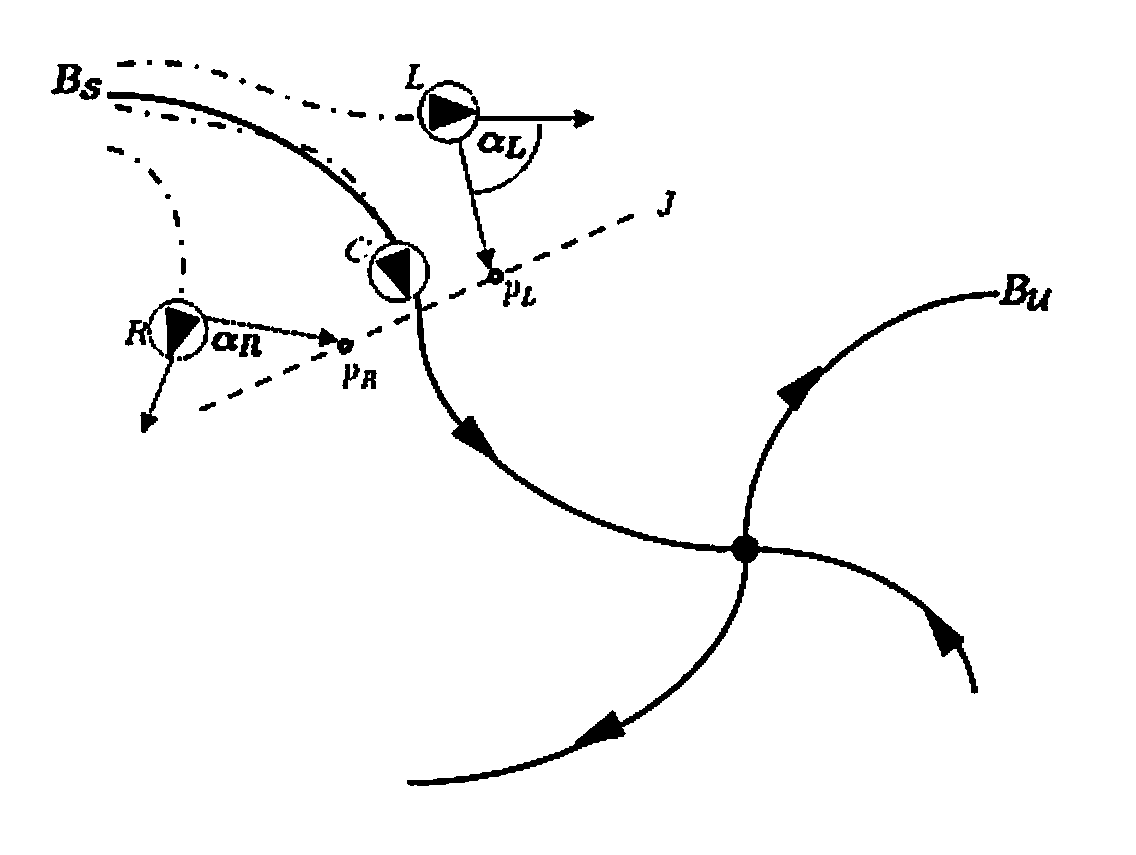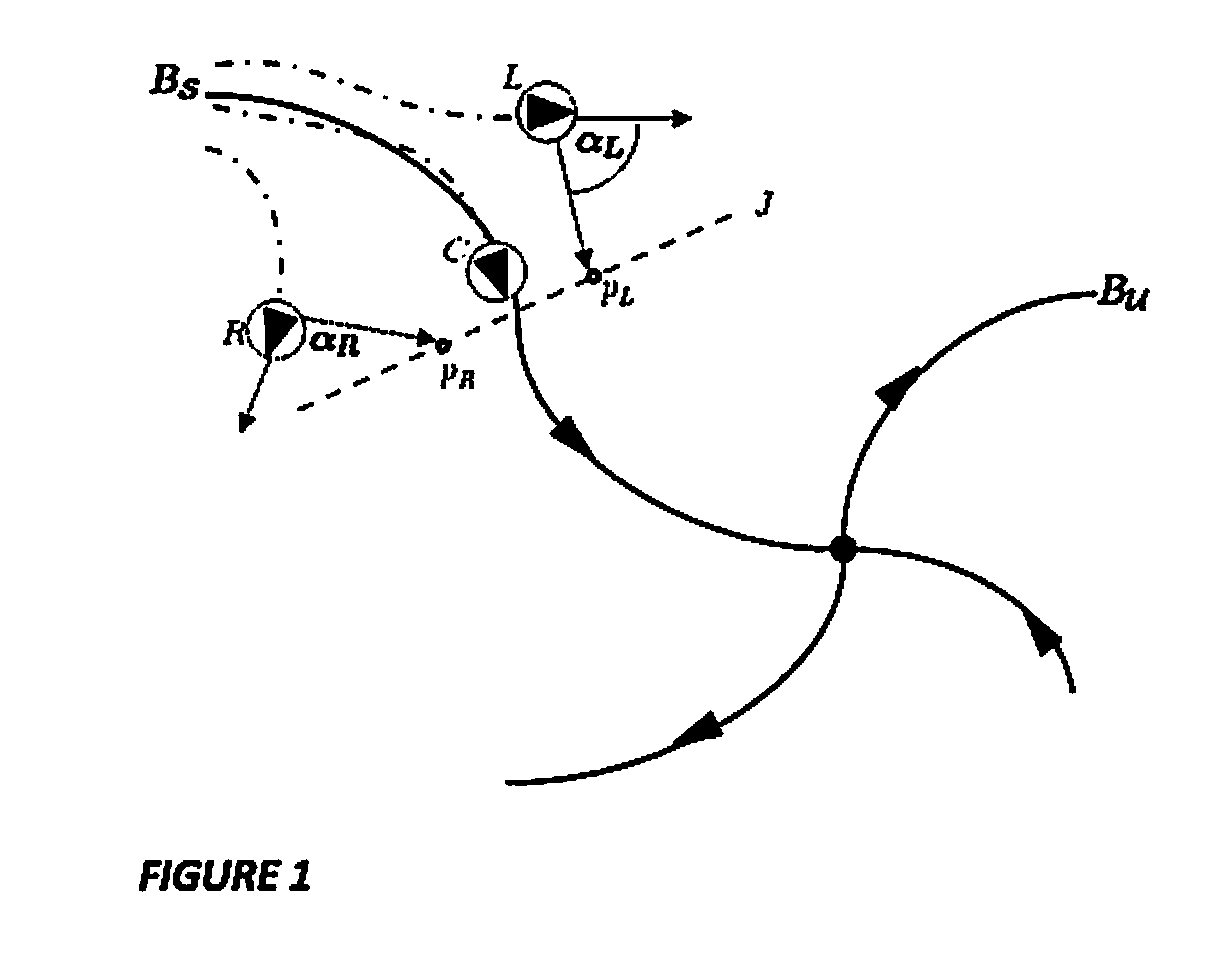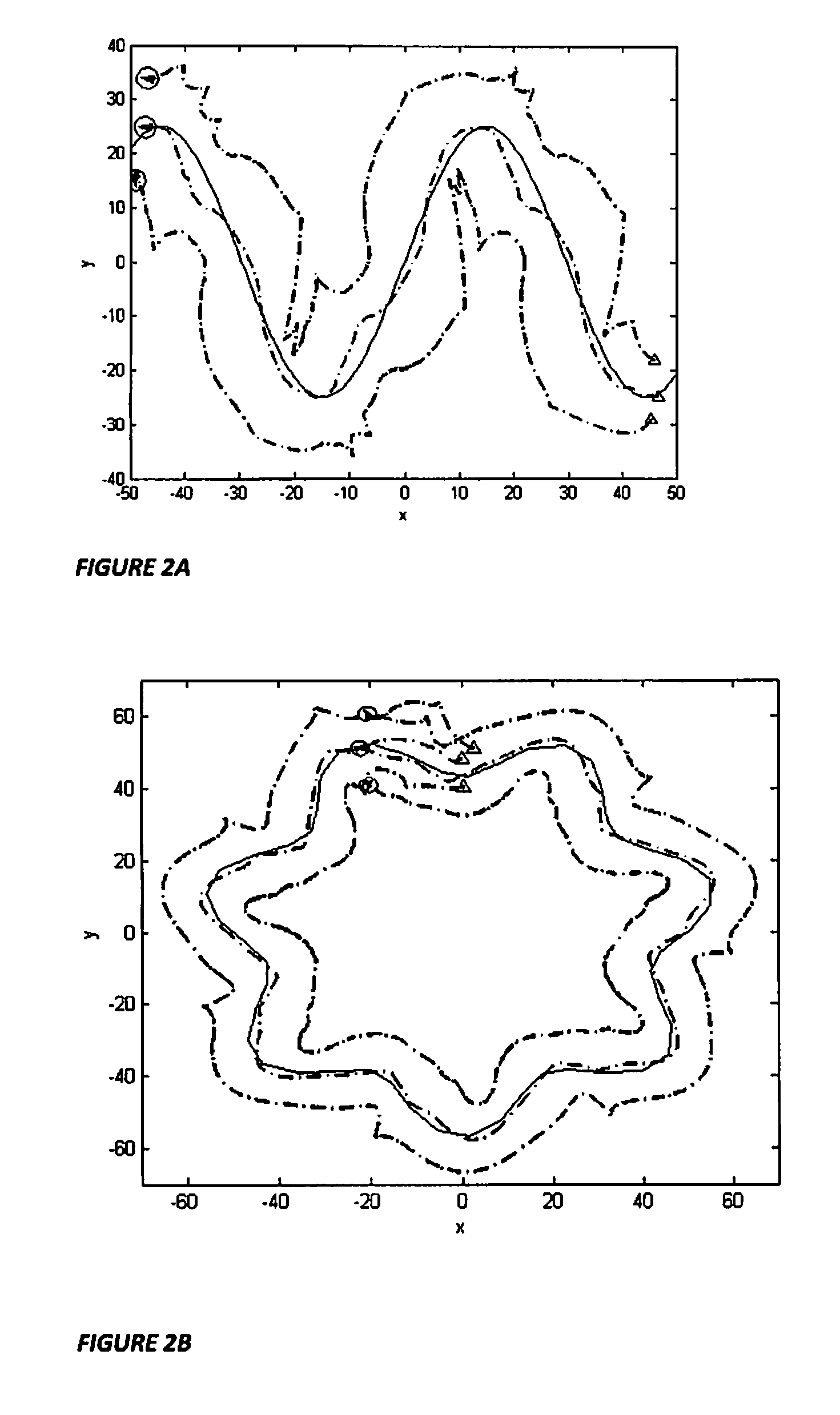Collaborative Robot Manifold Tracker
a robot and manifold technology, applied in the direction of liquid/fluent solid measurement, fluid speed measurement, instruments, etc., can solve the problem that the sensor will tend to escape from the monitoring region of interes
- Summary
- Abstract
- Description
- Claims
- Application Information
AI Technical Summary
Benefits of technology
Problems solved by technology
Method used
Image
Examples
Embodiment Construction
[0013]We consider the problem of controlling a team of N planar autonomous underwater vehicles (“AUVs”) or mobile autonomous underwater flow sensors, e.g. where each underwater flow sensor is tethered to a mobile autonomous watersurface craft, to collaboratively track the material lines that separate regions of flow with distinct fluid dynamics. This is similar to the problem of tracking the stable (and unstable) manifolds of a general nonlinear dynamical system where the manifolds separate regions in phase space with distinct dynamical behaviors. We assume the following 2D kinematic model for each of the AUVs:
dxi / dt=Vi cos θi+ui, (1a)
dyi / dt=Vi sin θi+vi; (1b)
where xi=[xi,yi]T is the vehicle's planar position, Vi and θi are the vehicle's linear speed and heading, and ui=[ui,vi]T is the velocity of the fluid current experienced / measured by the ith vehicle. Additionally, we assume each agent can be circumscribed by a circle of radius r, i.e., each vehicle can be equivalently describ...
PUM
 Login to View More
Login to View More Abstract
Description
Claims
Application Information
 Login to View More
Login to View More - R&D
- Intellectual Property
- Life Sciences
- Materials
- Tech Scout
- Unparalleled Data Quality
- Higher Quality Content
- 60% Fewer Hallucinations
Browse by: Latest US Patents, China's latest patents, Technical Efficacy Thesaurus, Application Domain, Technology Topic, Popular Technical Reports.
© 2025 PatSnap. All rights reserved.Legal|Privacy policy|Modern Slavery Act Transparency Statement|Sitemap|About US| Contact US: help@patsnap.com



